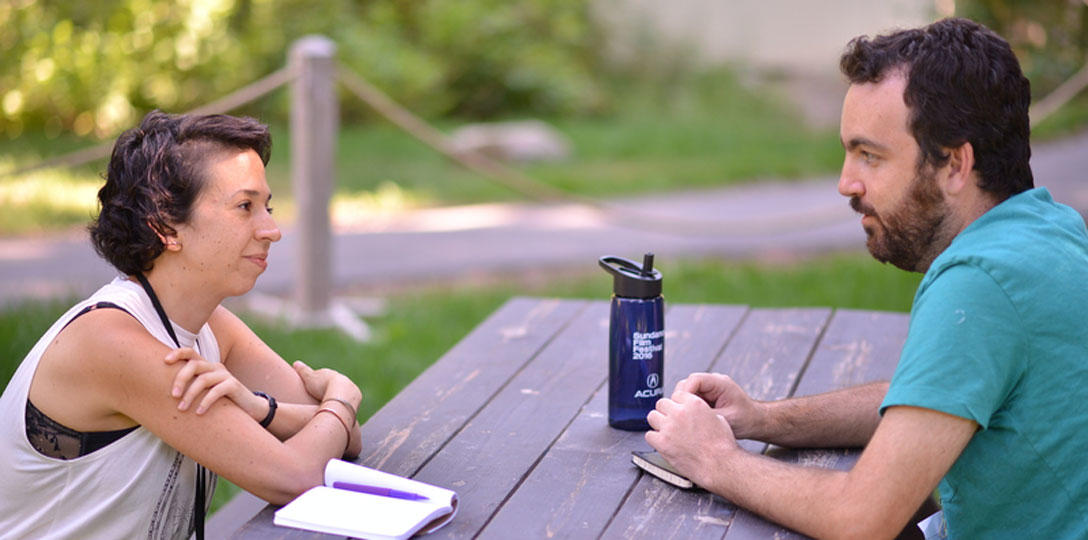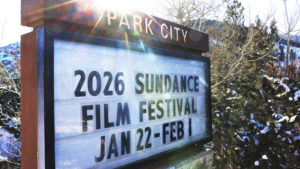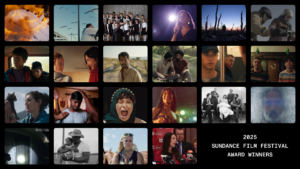Danielle Varga and producer/creative advisor Josh Penn at the 2016 Creative Producing Lab. © 2016 Sundance Institute | Brandon Cruz
Danielle Varga
Danielle Varga is a documentary filmmaker based in Brooklyn, NY. She most recently co-produced Kirsten Johnson’s feature “Cameraperson” and was a 2016 Documentary Film Creative Producing Lab Fellow.
I remember quite clearly, a little over a year-and-a-half ago, being seated at the Yarrow Theater in Park City, Utah, minutes before Cameraperson’s world premiere. The house was packed, muffled chatter filled the air—and I was incredibly nervous. In the months leading up to that moment, I had become so intertwined with the film—invested in every nook and cranny, each turn and choice, each conversation that preceded each choice.
Our team had thrown our minds and hearts, endless nights, and peculiar obsessions into the film. And there, on a Tuesday afternoon during the second week of the Sundance Film Festival, as our film was about to premiere in the New Frontier section, I sat with clenched fists, my heart beating rapidly. Were people going to like it? Were they going to get it? Would they even care? Turns out, they did. Cameraperson amassed brilliant reviews from critics, praise from colleagues, from strangers, invitations to almost every film festival, and an astounding acknowledgement from the documentary film community. The reception was incredible, beyond what I could ever have imagined.
Looking back, however, what sticks with me is not the validation, but the nerves. There is a certain kind of nerves that I’ve learned to relish in—as a filmmaker, a producer, a person. The nerves that come from the unknown, the possibility, the risk. In the final months of editing Cameraperson, then called A Blind Eye, the feedback we received after rough-cut screenings was often negative, and at best mixed.
Trusted filmmakers pressed us to make safer choices—they suggested that themes needed to be more explicit in order for audiences to understand them, or that characters needed to be fleshed out. One respected colleague called the structure confusing; another said it seemed arbitrary. And even after we received news of our acceptance into the Sundance Film Festival in early December, nearly two weeks after notifications normally go out, the confidence in the film felt like no one’s but our own.

Yet all along we were going to make the film that we were set to make. Our core team of four (director Kirsten Johnson, editor Nels Bangerter, producer Marilyn Ness, and myself as co-producer) understood that the film’s strength lay in its formal risks. And I was particularly propelled by this line of thinking. As a producer, it became clear that it was both my obligation and my impulse to encourage us to maintain our creative instincts, and our nerve, during those final weeks of editing. How Cameraperson would be received was completely unknown, and this made it all the more worthwhile for me, and all the more interesting—it is what made the air in the theater electric that Tuesday.
I have been deeply moved by this way of operating—taking chances and pursuing the unknown—in the films I choose to work on, in professional decisions, and as a general way of thinking. I believe in order to grow, we must move closer to our edges, to places that might make us uncomfortable. We must put our faith in what others might deem unsafe—artistically, professionally, politically.
Recently I have been drawn to produce films that take very bold approaches in artistic vision and form, and I look for collaborators who are interested in unraveling assumptions of what documentary and storytelling can be and should look like. I believe that documentary film, while often a vehicle for delivering information—stories, experiences, histories and the like—is in essence a form of communication. And to experiment with the form, the aesthetics, the language of a film, is to alter the way we are accustomed to listening and speaking, to change our predispositions in communication.
Sometimes, to disrupt them, which can be an inherently political act. I also find the role of process to be incredibly valuable and tend to produce films that embrace the filmmaking process with openness, while maintaining a core set of principles that moves me. I’m incredibly excited about the films I’m currently producing, including Brett Story’s next feature The Hottest August and Rachel Elizabeth Seed’s film A Photographic Memory.
A final note on the importance of relationships and community, particularly in making bold choices: Encouragement comes in all forms and shapes, but in both making art and in being human, it is key and irreplaceable—whether those relationships emerge between the director and DP, a producer and editor, and often among our peers, mentors, families and friends.
In pushing boundaries or simply staying true to one’s set of interests and values, faith from even a brave few can make all the difference. I’d just ask from filmmakers and our field at large, that we in return have a faith in our audiences, a belief that they have the capacity to absorb and appreciate the unexplored, that they too desire something new. And to know it’s okay if something doesn’t work right away. To know that nerves are a good thing.




